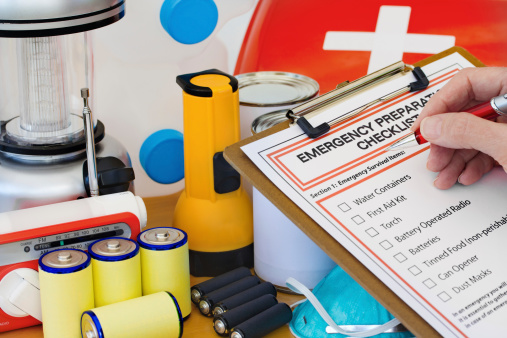Emergencies can happen anytime and often without warning. Being prepared can be the difference between life and death. However, emergency preparedness can look different for older adults — you may need assistance evacuating or medical treatments or medications that could be impacted by a sudden cessation of services. Ensure you and your family are prepared for an emergency with these tips.
Things to Consider When Creating an Emergency Preparedness Plan
Disasters can differ depending on your location. You might be more susceptible to hurricanes, tornadoes or winter storms. Regardless of the type of natural disaster, keep these things in mind before you start to create your disaster supply kit.
- What kinds of disasters am I most at risk for?
- Would I need to evacuate? If so, where would I go? Would I need assistance to help me evacuate?
- What would I need to be on my own without assistance for three days?
- If I didn’t have power, how would that affect me? (Would I need backup power for medical devices/medication, etc.?)
Putting Together an Emergency Plan
In addition to keeping enough non-perishable food, water and medication on hand for at least a week, you should keep cash, a cell phone charger and a flashlight in your disaster supply kit. You should keep a copy of your care plan in a waterproof bag that’s easily accessible.
Your care plan should include:
- Contact information for family members, doctors and pharmacies
- List of medications and dosage
- List of any allergies to food or medicine
- A copy of your health insurance card
- Copies of your advance directives, if you have them
You should also determine any kind of special assistance you may need. (Special instructions for creating an emergency plan for those with disabilities can be found here.) If you need assistance, create a support network of people who can assist you in an emergency. Share and practice your emergency plan with your support team and make sure they have a key to your home. If you receive regular treatments at an outpatient center or hospital, learn their emergency preparedness plans and of any backup locations you can utilize if you can’t get to your original treatment center.
Don’t Forget About Benefits or Your Pets
If you receive Social Security benefits or other benefits regularly, these could be impacted if mail service is disrupted. To avoid this disruption, switch your benefit payments to electronic instead of mail.
For federal benefits, you can request a direct deposit by calling 1-800-333-1795 or by using this form.
Though it may not seem like it, your pets need an emergency supply kit too. But first, identify any shelters that could take your pet in the event of an emergency. Most emergency shelters cannot accept pets. When putting your pet’s emergency supply kit together, consider including:
- At least a three-day supply of food and water
- Any medicine or important documents — like vaccination records or adoption papers
- A pet carrier, collar, leash and tags
- Any sanitation needs — litter, litter box, etc.
- Treats and toys (these can help reduce stress)
Taking the above points into consideration can ensure your safety in an emergency.











